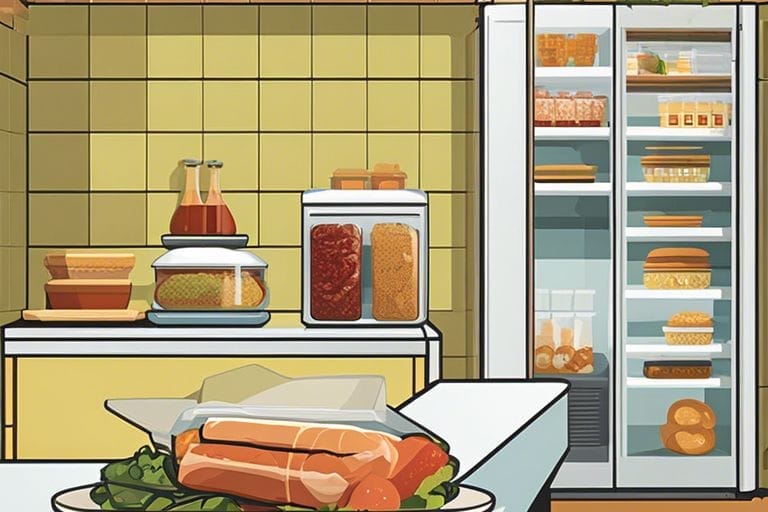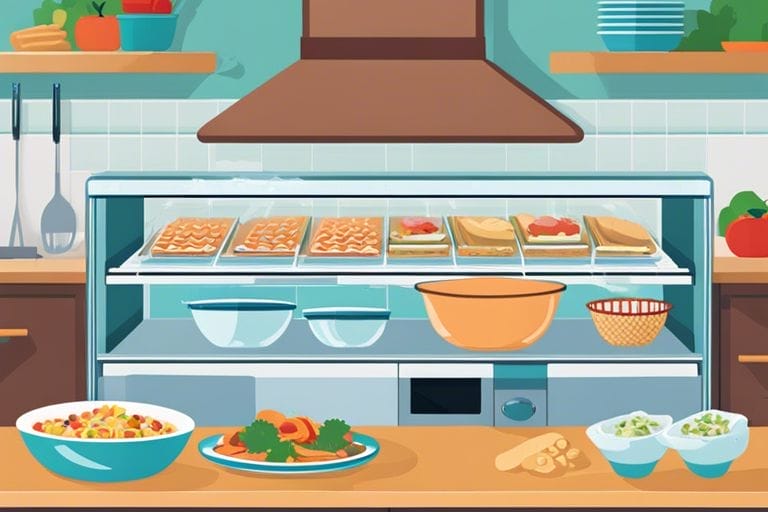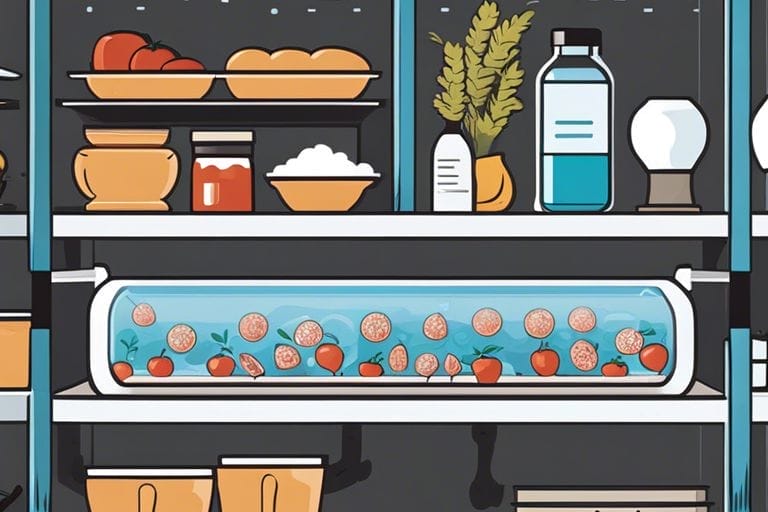When it comes to preserving your food, food safe cling film is a game changer. You might be using it to wrap up leftovers or cover ingredients while you prepare a meal, but do you really know what it is made of and how it works? In this post, you will gain a better understanding of cling film and how it keeps your food safe. You’ll learn about the materials it is made of, how it creates a barrier against bacteria and air, and why it is important to use the right type of cling film for food safety. Whether you are a home cook or a restaurant chef, knowing about food safe cling film is essential for keeping your meals fresh and safe to eat.
Key Takeaways:
- Food Safe Cling Film is a type of plastic wrap specifically designed to come into direct contact with food without posing any health risks.
- Understanding Cling Film involves knowing its characteristics, such as its ability to adhere to surfaces and create a tight seal around food items to keep them fresh.
- Choosing the right cling film is essential for food safety, as it should be BPA-free, microwave-safe, and able to withstand both hot and cold temperatures without releasing harmful chemicals.

What Is Cling Film?
Obviously, you are familiar with cling film as it is a common household item used for food storage and preservation. Cling film, also known as plastic wrap or food wrap, is a thin plastic film typically made from polyethylene. It is designed to cling to surfaces, creating an airtight seal to keep food fresh. Cling film is transparent, allowing you to easily see the contents of the wrapped items.
Definition and Basic Composition of Cling Film
When discussing the definition and basic composition of cling film, it’s important to note that it is typically made from polyethylene, a type of plastic that is widely used for food packaging. This material provides the film with its stretchy and clingy properties, making it an effective barrier for food storage. Some cling films may also contain additives to enhance their performance and durability.
Historical Development of Cling Film
The historical development of cling film dates back to the 1940s when it was first introduced as a commercial product. Initially, it was developed as a moisture-proof material for packaging. Over the years, advancements in technology and manufacturing processes have led to the production of cling film with improved cling and sealing capabilities. As a result, cling film has become an essential kitchen item for preserving and protecting food.
Food Safety and Cling Film
The use of cling film in food packaging and preservation has become a common practice. However, it is essential to understand the safety aspects of using cling film in direct contact with food to ensure that you are not inadvertently compromising the safety of your meals.
Health Concerns with Cling Film Usage
When it comes to using cling film for food storage, one of the primary concerns is the potential transfer of harmful chemicals to the food. Most conventional cling films are made from polyvinyl chloride (PVC) which contains plasticizers such as phthalates. When these chemicals come into contact with fatty or oily foods, there is a risk of migration into the food, which can pose health hazards when ingested. Similarly, when cling film is heated in the microwave, there is a possibility of chemical leaching into the food, especially if the film is not suitable for microwave use. It is important to be aware of these risks and take necessary precautions to minimize potential exposure to harmful chemicals.
Regulatory Standards for Food Safe Cling Film
To address the health concerns associated with conventional cling film, regulatory standards have been put in place to ensure that cling film labeled as “food safe” meets specific safety criteria. Food safe cling film is typically made from polyethylene, which is free from harmful chemicals like phthalates. This type of cling film is designed to be safe for direct contact with food and is suitable for use in various food packaging and preservation applications. When choosing cling film for your food storage needs, look for products that comply with regulatory standards for food safety, such as those that are labeled as BPA-free and safe for microwave use. By selecting food safe cling film, you can have peace of mind knowing that you are taking steps to protect yourself and your family from potential health risks associated with conventional cling film.

Proper Use of Cling Film
Despite the convenience of cling film, it is important to understand the proper way to use it to ensure food safety. When using cling film to wrap and store food, it is essential to choose a high-quality, food safe cling film that is designed specifically for use with food. If you are unsure of which type of cling film is best for wrapping food, you can find more information on this topic here.
Best Practices for Wrapping and Storing Food
When using cling film to wrap and store food, it is important to follow best practices to ensure that your food remains safe to consume. Always make sure that the food is completely cooled before wrapping it in cling film, as trapping heat can create a breeding ground for bacteria. Additionally, when wrapping food, you should make sure to press the cling film directly onto the surface of the food to create a tight seal. This will help to prevent air and moisture from entering, which can lead to food spoilage. Finally, when storing food wrapped in cling film, it is best to place it in airtight containers or resealable bags to provide an extra layer of protection.
Common Misuses and How to Avoid Them
It is important to be aware of common misuses of cling film to avoid potential food safety issues. One common mistake is using cling film in the microwave, which can cause it to melt and leach chemicals into your food. Always use microwave-safe containers or covers instead of cling film for microwaving food. Another common misuse is using cling film in high-temperature settings, such as in the oven or on a stovetop. Exposing cling film to high heat can result in it melting or releasing toxic fumes, posing a danger to your health. Be sure to use appropriate materials, such as parchment paper or aluminum foil, for these cooking methods instead.
Alternatives to Cling Film
Your commitment to food safety is commendable, and you may be wondering if there are suitable alternatives to cling film. You can opt for reusable food wraps made from beeswax, which are a sustainable alternative to cling film. Another option is silicone food covers, which can be reused multiple times and are an effective way to keep food fresh. Additionally, glass or metal containers with lids are a fantastic alternative to cling film, as they are not only safe for food storage but also reusable and eco-friendly. If you are interested in learning more about the impact of cling film on the environment and alternative options, you can check out this informative article A Note About Cling Film.
Eco-Friendly Options for Food Storage
When it comes to eco-friendly options for food storage, you have several choices that not only prioritize sustainability, but also offer great convenience. Reusable silicone food wraps are an excellent alternative to single-use cling film, as they can be easily washed and reused. Beeswax wraps are another eco-friendly option that not only keep your food fresh, but also reduce your plastic waste. Additionally, investing in glass or stainless steel food storage containers can help minimize your use of cling film and contribute to a more sustainable lifestyle.
Balancing Convenience and Sustainability
It’s important to find a balance between convenience and sustainability when it comes to food storage. While cling film may offer a quick and easy solution for wrapping food, it’s essential to consider the environmental impact. Reusable alternatives such as silicone food covers and beeswax wraps can provide the same level of convenience while reducing your reliance on single-use plastics. By making small changes in your food storage habits, you can make a positive impact on the environment while still enjoying the convenience of cling film alternatives. Remember, your choices matter and can make a significant difference in reducing plastic waste.
What Is Food Safe Cling Film? Understanding Cling Film
Presently, you have a clear understanding of what food safe cling film is and its importance in food preservation and safety. It is a versatile and essential tool in the kitchen, providing a convenient way to store and protect your food. By learning about the different types of cling film and their characteristics, you can make informed decisions about which products are best for your needs. Remember to always look for food safe cling film that is free from harmful chemicals and safe for use with food. By using cling film properly, you can ensure that your food stays fresh and safe for consumption.
FAQ
Q: What is food safe cling film?
A: Food safe cling film, also known as plastic wrap or cling wrap, is a thin plastic film typically used to seal and cover food items. It is designed to be safe for use with food, ensuring that it does not transfer harmful substances to the food it comes into contact with.
Q: Is cling film safe to use with all types of food?
A: While food safe cling film is suitable for most types of food, it is important to exercise caution when using it with certain foods. It should not be used in the microwave unless explicitly labeled as microwave-safe. Additionally, acidic foods like tomatoes or citrus fruits can cause the film to break down and transfer chemicals, so it is best to avoid prolonged contact with these types of foods.
Q: How should food safe cling film be stored?
A: Food safe cling film should be stored in a cool, dry place, away from direct sunlight and heat sources. The packaging should include specific storage instructions that should be followed to ensure the film retains its integrity and does not become compromised. It is important to use the cling film within the recommended timeframe to maintain its food safety properties.

